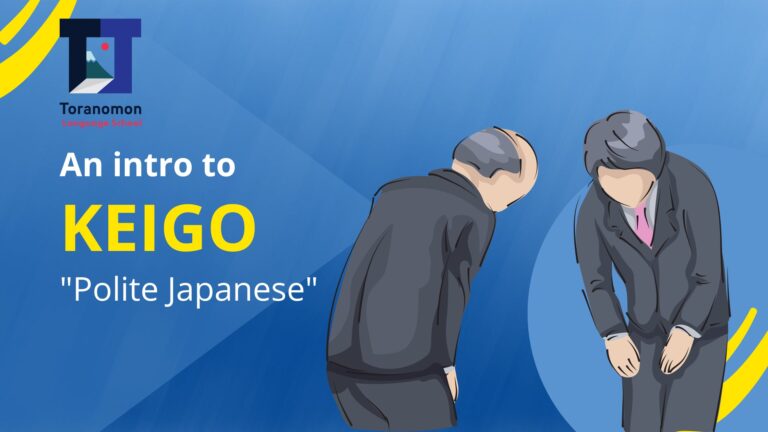If you’re learning the Japanese language, then you’ve probably heard of keigo. But what exactly is it? Keigo, or honorific speech, is a set of grammatical rules and word choices that determine how polite or respectful the speaker is being when they communicate with another person. This system of speech plays a major role in Japanese culture and is used in many social situations. Let’s take a closer look at this fascinating aspect of the Japanese language.
When to use keigo?
In Japan, even in day-to-day conversation, it is common to use Keigo in order to show respect. This can range from using more formal words and phrases when talking with coworkers or elders (such as “desu” instead of “da”), to using more polite verb forms (for example, “ichimairimasu” instead of “iku”). Using Keigo will help you make a good impression on those around you and earn their respect.
Keigo includes a combination of honorific prefixes and suffixes that are added to nouns and verbs to show respect. For example, o-tsukare-sama desu (お疲れ様です) is the polite way to say “thank you for your hard work” in Japanese. The o- attached to tsukare (疲れ) shows respect towards the person being thanked. In order to effectively use keigo, it helps if you have an understanding of Japanese culture first, so that you can judge if the situation requires formal or casual language.
The Basics of Keigo
The most important thing to understand about keigo is that it consists of three main categories: Teineigo (“polite language”), sonkeigo (“respectful language”) and kenjōgo (“humble language”).
Teineigo tends to be more neutral and can be used with people who have equal or lower social standing than you, such as colleagues or classmates. It’s the easiest to learn, you simply use the full form of words (-masu, etc), and sometimes add o-/go- to the front of words, like “obentou”.
Sonkeigo is used when talking about oneself or one’s own group in a respectful way to someone from an outside group, while kenjōgo is used when talking about oneself or one’s own group humbly to someone from an outside group. Kenjōgo is even more humble than sonkeigo and should only be used with people who are held in high esteem by society, or when talking to people outside your “circle” (for example: your clients). In both cases, the speaker must use appropriate words and phrases to show respect for their conversation partner, as well as their respective social positions.
Grammar Rules for Keigo
In addition to using specific words and phrases, there are several grammatical rules that must be followed when speaking in keigo. For instance, verbs can be conjugated differently depending on who the speaker is referring to and whether they are using sonkeigo or kenjōgo. Additionally, pronouns can be changed depending on whom the speaker is referring to—for example, one might use “watakushi” instead of “watashi” when speaking respectfully about oneself in an official setting. Finally, honorific suffixes such as “-sama” and “-san” can also be added to names as a sign of respect.
Keigo is too complex to learn from one blog article, so we recommend learning from the best – one of our TLS teachers. Our Japanese classes can teach you everything you need to know to confidently use keigo in the workplace.
Keigo may seem intimidating at first glance, but it really isn’t too difficult once you get used to it. By learning the basics of keigo grammar and memorizing some common words and phrases associated with it, you’ll soon find yourself speaking more politely than ever before! As you continue your journey into the fascinating world of Japanese culture and language mastery, remember that mastering keigo will open up countless possibilities for communication with native speakers, especially in the workplace—so don’t forget to practice! Good luck!

